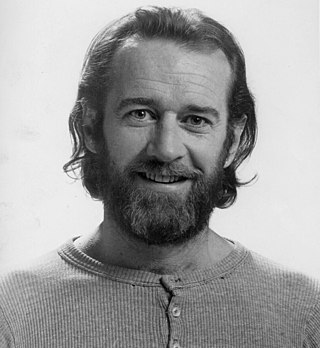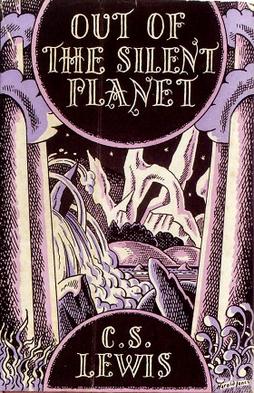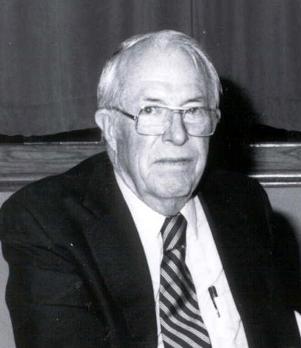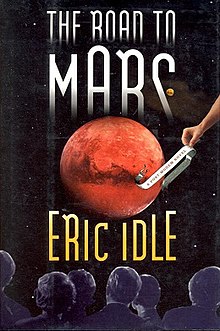
Mars, the fourth planet from the Sun, has appeared as a setting in works of fiction since at least the mid-1600s. Trends in the planet's portrayal have largely been influenced by advances in planetary science. It became the most popular celestial object in fiction in the late 1800s, when it became clear that there was no life on the Moon. The predominant genre depicting Mars at the time was utopian fiction. Around the same time, the mistaken belief that there are canals on Mars emerged and made its way into fiction, popularized by Percival Lowell's speculations of an ancient civilization having constructed them. The War of the Worlds, H. G. Wells's novel about an alien invasion of Earth by sinister Martians, was published in 1897 and went on to have a major influence on the science fiction genre.

The Fountains of Paradise is a 1979 science fiction novel by British writer Arthur C. Clarke. Set in the 22nd century, it describes the construction of a space elevator. This "orbital tower" is a giant structure rising from the ground and linking with a satellite in geostationary orbit at the height of approximately 36,000 kilometers. Such a structure would be used to raise payloads to orbit without the expense of using rockets. The novel won both the Hugo and Nebula Awards for Best Novel.

Alastair Preston Reynolds is a British science fiction author. He specialises in hard science fiction and space opera. He spent his early years in Cornwall, moved back to Wales before going to Newcastle University, where he studied physics and astronomy. Afterwards, he earned a PhD in astrophysics from the University of St Andrews. In 1991, he moved to Noordwijk in the Netherlands where he met his wife Josette. There, he worked for the European Space Research and Technology Centre until 2004 when he left to pursue writing full-time. He returned to Wales in 2008 and lives near Cardiff.

Geoffrey Alan Landis is an American aerospace engineer and author, working for the National Aeronautics and Space Administration (NASA) on planetary exploration, interstellar propulsion, solar power and photovoltaics. He holds nine patents, primarily in the field of improvements to solar cells and photovoltaic devices and has given presentations and commentary on the possibilities for interstellar travel and construction of bases on the Moon, Mars, and Venus.

John Carter of Mars is a fictional Virginian soldier who acts as the initial protagonist of the Barsoom stories by Edgar Rice Burroughs. A veteran of the American Civil War, he is transported to the planet Mars, called Barsoom by its inhabitants, where he becomes a warrior battling various mythological beasts, alien armies and malevolent foes. Created in 1911, the character has appeared in novels and short stories, comic books, television shows and films, including the 2012 feature film John Carter, which marked the 100th anniversary of the character's first appearance.

Daniel Michael DeVito Jr. is an American actor, comedian, and filmmaker. He gained prominence for his portrayal of the taxi dispatcher Louie De Palma in the television series Taxi (1978–1983), which won him a Golden Globe Award and an Emmy Award. He plays Frank Reynolds on the FX and FXX sitcom It's Always Sunny in Philadelphia (2006–present).

George Denis Patrick Carlin was an American stand-up comedian, actor, author, and social critic. Regarded as one of the most important and influential stand-up comedians of all time, he was dubbed "the dean of counterculture comedians". He was known for his black comedy and reflections on politics, the English language, psychology, religion, and taboo subjects. His "seven dirty words" routine was central to the 1978 United States Supreme Court case F.C.C. v. Pacifica Foundation, in which a 5–4 decision affirmed the government's power to censor indecent material on public airwaves.

Out of the Silent Planet is a science fiction novel by the British author C. S. Lewis, first published in 1938 by John Lane, The Bodley Head. Two sequels were published in 1943 and 1945, completing the Space Trilogy.

John Stewart Williamson, who wrote as Jack Williamson, was an American science fiction writer, one of several called the "Dean of Science Fiction". He is also credited with one of the first uses of the term genetic engineering. Early in his career he sometimes used the pseudonyms Will Stewart and Nils O. Sonderlund.
The Space Trilogy is a series of science fiction novels by C. S. Lewis. The trilogy consists of Out of the Silent Planet (1938), Perelandra (1943), and That Hideous Strength (1945). A philologist named Elwin Ransom is the protagonist of the first two novels and an important character in the third.
Elaine Lee is an American actress, playwright, producer, and writer, who specializes in graphic novels. She has also received recognition and awards for her work as a creator and producer of audio books and dramas.

David Starr, Space Ranger is the first novel in the Lucky Starr series, six juvenile science fiction novels by Isaac Asimov that originally appeared under the pseudonym Paul French. The novel was written between 10 June and 29 July 1951 and first published by Doubleday & Company in January 1952. Since 1971, reprints have included an introduction by Asimov explaining that advancing knowledge of conditions on Mars have rendered some of the novel's descriptions of that world inaccurate. The novel was originally intended to serve as the basis for a television series, a science-fictionalized version of The Lone Ranger, but the series was never made, in part because another series called Rocky Jones, Space Ranger was already in the planning stages.

Lucky Starr and the Moons of Jupiter is the fifth novel in the Lucky Starr series, six juvenile science fiction novels by Isaac Asimov that originally appeared under the pseudonym Paul French. The novel was first published by Doubleday & Company in August 1957. It is the only novel by Asimov set in the Jovian system.

Robinsonade is a literary genre of fiction wherein the protagonist is suddenly separated from civilization, usually by being shipwrecked or marooned on a secluded and uninhabited island, and must improvise the means of their survival from the limited resources at hand. The genre takes its name from the 1719 novel Robinson Crusoe by Daniel Defoe. The success of this novel spawned so many imitations that its name was used to define a genre, which is sometimes described simply as a "desert island story" or a "castaway narrative".

Rainbow Mars is a 1999 science fiction short story collection by American writer Larry Niven. It contains six stories of Hanville Svetz, five previously published and the longest, "Rainbow Mars", written for the collection. The setting of the Svetz stories is Earth in the distant future. The hereditary leader of the Earth, known as the Secretary General, is an inbred imbecile. In order to maintain the interest of the Secretary, different factions in the capitol use their advanced science to amuse him. Svetz's section uses time travel in an attempt to bring back long extinct animals from Earth's past. Unbeknownst to Svetz and his team, they are actually travelling back into fictional pasts, and returning with mythical creatures.

Tales of Pirx the Pilot is a science fiction stories collection by Polish author Stanisław Lem, about a spaceship pilot named Pirx.
The fictional portrayal of the Solar System has often included planets, moons, and other celestial objects which do not actually exist in reality. Some of these objects were, at one time, seriously considered as hypothetical planets which were either thought to have been observed, or were hypothesized to be orbiting the Sun in order to explain certain celestial phenomena. Often such objects continued to be used in literature long after the hypotheses upon which they were based had been abandoned.
"The Waters of Mars" is the second of four specials of the British science fiction television series Doctor Who, broadcast between Easter Saturday 2009 and New Year's Day 2010, all serving as David Tennant's final episodes as the Tenth Doctor. As with the previous special, "Planet of the Dead", it was simultaneously broadcast on BBC One and BBC HD on 15 November 2009.

The Phobos monolith is a large rock on the surface of Mars's moon Phobos. It is a boulder about 85 m (279 ft) across and 90 m (300 ft) tall. A monolith is a geological feature consisting of a single massive piece of rock. Monoliths also occur naturally on Earth, but it has been suggested that the Phobos monolith may be a piece of impact ejecta. The puzzling thing is tall rectangular pieces of stone can not be classed as boulders, so there is a question to be asked as to its real origin. The monolith is a bright object near Stickney crater, described as a "building sized" boulder, which casts a prominent shadow. It was discovered by Efrain Palermo, who did extensive surveys of Martian probe imagery, and later confirmed by Lan Fleming, an imaging sub-contractor at NASA Johnson Space Center.

The Martian is a 2011 science fiction debut novel written by Andy Weir. The book was originally self-published on Weir's blog, in a serialized format. In 2014, the book was re-released after Crown Publishing Group purchased the exclusive publishing rights. The story follows an American astronaut, Mark Watney, as he becomes stranded alone on Mars in 2035 and must improvise in order to survive.
















